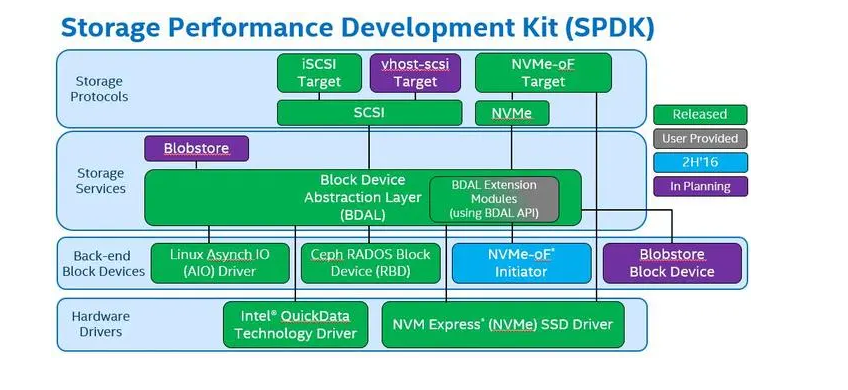下面是一个示例代码,演示如何在VPP中实现从一个端口接收数据,并将其均衡转发到其他端口:
#include <vpp/api/vpe_msg_enum.h>
#include <vlibmemory/api.h>
#include <vnet/ip/ip.h>
#include <vnet/ethernet/ethernet.h>
#define foreach_standard_reply_retval \
_ (NO_REPLY, "no reply")
typedef enum {
#define _(f,s) REPLY_##f,
foreach_standard_reply_retval
#undef _
REPLY_LAST,
} standard_reply_type_t;
static void
send_response(vlib_main_t *vm, u32 context_id, i32 retval)
{
vl_api_registration_t *reg;
vl_api_svm_plugin_socket_transport_t *socket;
reg = vl_api_client_index_to_registration(context_id);
if (reg == NULL) {
return;
}
socket = transport_reg_socket(reg);
vl_api_send_rpc_reply (socket->server_handle,
reg->client_queue_address,
VPPCOM_PROTO_TCP,
retval);
}
static clib_error_t *
test_interface_input(vlib_main_t *vm, vlib_node_runtime_t *node, vlib_frame_t *frame)
{
u32 n_left_from, next_index, *from;
from = vlib_frame_vector_args(frame);
n_left_from = frame->n_vectors;
next_index = node->cached_next_index;
while (n_left_from > 0) {
u32 bi0;
vlib_buffer_t *b0;
ethernet_header_t *eth0;
bi0 = from[0];
from +=1;
n_left_from -=1;
b0 = vlib_get_buffer(vm, bi0);
eth0 = vlib_buffer_get_current(b0);
/* 均衡转发逻辑,这里简单实现将数据包发送到所有其他端口 */
u32 sw_if_index = vnet_buffer(b0)->sw_if_index[VLIB_RX];
vnet_main_t *vnm = vnet_get_main();
vnet_sw_interface_t *swif = vnet_get_sw_interface(vnm, sw_if_index);
u32 num_interfaces = vec_len(swif->sup_sw_if_indices);
for (u32 i = 0; i < num_interfaces; ++i) {
u32 next_sw_if_index = swif->sup_sw_if_indices[i];
if (next_sw_if_index != sw_if_index) {
/* 克隆数据包并发送到下一个接口 */
u32 new_bi;
vlib_buffer_t *new_b;
new_bi = vlib_buffer_copy(vm, bi0);
if (PREDICT_FALSE(new_bi == ~0)) {
send_response(vm, b0->error_context,
REPLY_NO_REPLY); // 发送错误响应
return 0;
}
new_b = vlib_get_buffer(vm, new_bi);
/* 更新克隆的缓冲区的接收和发送接口索引 */
vnet_buffer(new_b)->sw_if_index[VLIB_RX] = next_sw_if_index;
vnet_buffer(new_b)->sw_if_index[VLIB_TX] = next_sw_if_index;
/* 将克隆的缓冲区提交给下一个节点处理 */
vlib_set_next_frame_buffer(vm, node,
VNET_INTERFACE_OUTPUT_NEXT_NORMAL,
new_bi);
}
}
/* 标记当前缓冲区已处理 */
vlib_buffer_advance(b0, sizeof(ethernet_header_t));
vlib_set_next_frame_buffer(vm, node, next_index, bi0);
}
return 0;
}
VLIB_REGISTER_NODE(test_interface_input_node) = {
.function = test_interface_input,
.name = "test-interface-input",
.vector_size = sizeof(u32),
};
上面的代码片段定义了一个名为 test-interface-input 的节点,它接收数据包,并将其均衡转发到所有其他接口。在函数 test_interface_input() 中,我们首先获取到输入的缓冲区并解析以太网头部信息。然后根据当前接收到的接口索引,在 VPP 中找到对应的物理接口对象,并获取与之关联的所有下层子接口。
随后,我们克隆原始缓冲区,并将克隆的缓冲区发送到其他接口。最后,我们标记原始缓冲区已处理,并提交给下一个节点进行进一步处理。
请注意,上述代码片段是一个简化版示例,并没有考虑线程安全、错误处理等方面的完整实现。在实际应用中,还需要添加更多细节和边界条件检查来确保正确性和健壮性。
内容由零声教学AI助手提供,问题来源于学员提问










![异常服务器收到的包如下0:38.316208 IP (tos 0x0, ttl 112, id 0, offset 0, flags [DF], proto IPIP (4), length 72)
172.22.132.131 > 10.26.211.160: IP (tos 0x0, ttl 118, id 12337, offset 0, flags [DF], proto TCP (6), length 52)
121.35.103.108.5816 > 172.2...](https://linuxcpp.0voice.com/zb_users/upload/2023/05/202305162224299866311.png)












